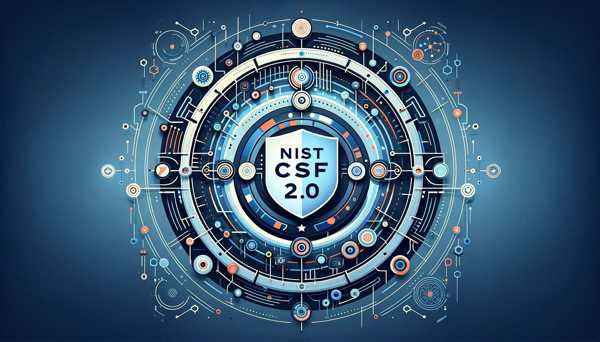Acute Leukemia: A New Era of Treatments
Acute leukemia, a rapidly progressing cancer of the blood and bone marrow, has historically been one of the most aggressive forms of cancer, requiring immediate and intensive treatment. The two main types of acute leukemia—acute myeloid leukemia (AML) and acute lymphoblastic leukemia (ALL)—differ in their cellular origin and molecular characteristics but share a common need for prompt intervention. Traditional treatments like chemotherapy and bone marrow transplants have been the mainstay of therapy, but a wave of new treatment options is reshaping the landscape of care for acute leukemia. These innovations promise better outcomes, fewer side effects, and more personalized therapies, marking the dawn of a new era in the treatment of acute leukemia.
Acute leukemia, a rapidly progressing cancer of the blood and bone marrow, has historically been one of the most aggressive forms of cancer, requiring immediate and intensive treatment. The two main types of acute leukemia—acute myeloid leukemia (AML) and acute lymphoblastic leukemia (ALL)—differ in their cellular origin and molecular characteristics but share a common need for prompt intervention. Traditional treatments like chemotherapy and bone marrow transplants have been the mainstay of therapy, but a wave of new treatment options is reshaping the landscape of care for acute leukemia. These innovations promise better outcomes, fewer side effects, and more personalized therapies, marking the dawn of a new era in the treatment of acute leukemia.

1. Immunotherapy: Harnessing the Power of the Immune System
Immunotherapy, which uses the body’s own immune system to fight cancer, has been a game-changer in the treatment of acute leukemia, particularly in cases that are resistant to traditional therapies.
- CAR-T Cell Therapy: A Revolutionary ApproachChimeric Antigen Receptor T-cell (CAR-T) therapy is one of the most significant breakthroughs in cancer treatment. In this approach, a patient’s T-cells (a type of immune cell) are extracted, genetically modified in the lab to express a receptor that targets leukemia cells, and then infused back into the patient. This enables the T-cells to recognize and attack cancer cells more effectively.
CAR-T therapy has already revolutionized the treatment of acute lymphoblastic leukemia (ALL), particularly in children and young adults who have relapsed or are resistant to other treatments.
- Kymriah(tisagenlecleucel) became the first CAR-T therapy to be approved by the FDA for ALL in patients up to the age of 25. This approval marked a milestone in leukemia treatment, offering a potentially curative option for patients who had exhausted other therapies.
- Yescarta(axicabtagene ciloleucel) has also been approved for use in treating large B-cell lymphoma, and research is ongoing to expand CAR-T applications to acute myeloid leukemia (AML). Though CAR-T for AML is still in early stages, early results have shown promise, especially when combined with other therapies.
- Bispecific T-cell Engagers (BiTEs): A Targeted ImmunotherapyBlincyto (blinatumomab) is a Bispecific T-cell engager that links T-cells to leukemia cells, specifically those found in ALL. This therapy works by redirecting the immune system to target and destroy leukemia cells, even in cases where the disease has become resistant to chemotherapy. BiTE therapy has been particularly useful for patients with minimal residual disease (MRD)—small amounts of leukemia cells that remain in the body after remission, which can lead to relapse.
2. Targeted Therapies: Precision Medicine for Acute Leukemia
Targeted therapies are drugs that specifically target the genetic mutations or molecular pathways that drive the growth and survival of leukemia cells. Unlike chemotherapy, which affects both healthy and cancerous cells, targeted therapies are more precise, leading to fewer side effects and better outcomes.
- Tyrosine Kinase Inhibitors (TKIs) for CML and Ph+ ALLFor chronic myelogenous leukemia (CML) and Philadelphia chromosome-positive acute lymphoblastic leukemia (Ph+ ALL), tyrosine kinase inhibitors (TKIs) such as imatinib (Gleevec), dasatinib (Sprycel), and nilotinib (Tasigna) are highly effective. These drugs target the abnormal protein produced by the Philadelphia chromosome (the BCR-ABL fusion gene) and block its ability to drive leukemia cell growth.
- In Ph+ ALL, TKIs are used in combination with chemotherapy, and their introduction has dramatically improved survival rates. The ability to block the BCR-ABL protein without the toxic effects of traditional chemotherapy has allowed for better quality of life and increased remission rates.
- FLT3 Inhibitors for AMLAML is often driven by mutations in the FLT3 gene, which is responsible for regulating the growth of hematopoietic stem cells. Drugs like midostaurin (Rydapt) and gilteritinib (Xospata) are FLT3 inhibitors that specifically target this mutation. These therapies have shown remarkable effectiveness, particularly when used in combination with chemotherapy. For patients with FLT3 mutations, FLT3 inhibitors have significantly improved survival and reduced relapse rates.
- IDH Inhibitors for AMLMutations in the IDH1 and IDH2 genes are common in AML and contribute to the malignant transformation of normal cells. Ivosidenib (Tibsovo) and enasidenib (Idhifa) are drugs that inhibit these mutations, leading to the differentiation of leukemia cells and preventing their uncontrolled growth. These targeted therapies offer a new option for patients with these mutations, particularly those who are not candidates for chemotherapy or stem cell transplants.
3. Gene Editing: The Future of Leukemia Treatment
Gene editing technologies, such as CRISPR-Cas9, have opened new possibilities for the treatment of acute leukemia. By allowing precise alterations to a patient's genetic material, these technologies offer the potential to correct genetic mutations that cause leukemia or to enhance immune cells’ ability to fight cancer.
- CRISPR for Leukemia CellsIn preclinical studies, CRISPR-Cas9 is being used to edit the DNA of leukemia cells to either repair mutations or make them more susceptible to treatment. For example, CRISPR can be used to edit the IDH1 and IDH2 genes in AML, potentially correcting the mutations that drive leukemia.
- CRISPR for T-cell EngineeringOne of the most exciting applications of CRISPR is in T-cell engineering. By using CRISPR to modify a patient's T-cells, researchers can enhance the cells’ ability to target and destroy leukemia cells. For example, CRISPR can be used to delete checkpoint proteins that prevent T-cells from recognizing cancer cells, potentially making CAR-T therapy even more powerful.
Early-stage clinical trials are already underway to explore the use of CRISPR-edited T-cells in leukemia, and while this technology is still in its infancy, it holds immense promise for the future.
4. Stem Cell Transplants: A Proven Cure, Evolving with Technology
Stem cell transplants, also known as hematopoietic stem cell transplants (HSCT), remain a cornerstone of treatment for patients with high-risk or relapsed acute leukemia. While not a new therapy, recent innovations in transplant techniques have improved outcomes and reduced risks.
- Reduced-Intensity Conditioning (RIC)Traditional stem cell transplants require high doses of chemotherapy or radiation to prepare the patient for the procedure, which can be difficult for older patients or those with other health issues. Reduced-intensity conditioning (RIC) uses lower doses of chemotherapy, which has resulted in fewer complications and quicker recovery times. This has made stem cell transplants more accessible to a broader range of patients.
- Haploidentical TransplantsHaploidentical stem cell transplants involve using stem cells from a partially matched donor, often a family member. This approach has become an important option for patients who do not have a fully matched donor available, increasing the likelihood of a successful transplant and offering life-saving treatment for more patients.
- Gene-edited Stem CellsResearchers are also investigating gene editing techniques to improve the success of stem cell transplants. By editing the donor stem cells to make them more resistant to leukemia or less likely to cause graft-versus-host disease (GVHD), this approach could further enhance transplant outcomes.
5. Personalized Medicine: Tailoring Treatment to the Patient
The future of acute leukemia treatment lies in personalized medicine, where therapies are tailored to the individual patient based on their genetic makeup and the specific mutations present in their leukemia cells. Advances in genomic sequencing have made it possible to analyze a patient’s leukemia at the molecular level, identifying mutations that can be targeted with specific drugs or therapies.
- Genomic Sequencing:By sequencing the genome of leukemia cells, oncologists can identify specific mutations driving the disease. This allows for the selection of the most effective treatment options, such as targeted therapies or gene-editing approaches, that are most likely to work for the individual patient.
- Pharmacogenomics:Understanding how a patient’s genetic makeup influences their response to drugs can also help optimize treatment. Pharmacogenomic testing can identify which drugs are most likely to be effective, reducing the risk of adverse reactions and improving outcomes.
Conclusion: A New Era of Hope for Acute Leukemia
The treatment landscape for acute leukemia has undergone a dramatic transformation, with advances in immunotherapy, targeted therapies, gene editing, and stem cell transplants offering patients more options and better outcomes than ever before. As research continues and new technologies evolve, the promise of a cure for acute leukemia becomes increasingly attainable.
With these innovations, leukemia treatment is becoming more personalized, precise, and effective. For patients, this means a future with better chances for long-term remission, fewer side effects, and an improved quality of life. While challenges remain, the new era of leukemia therapy offers hope like never before, providing renewed optimism for those battling this aggressive disease.








